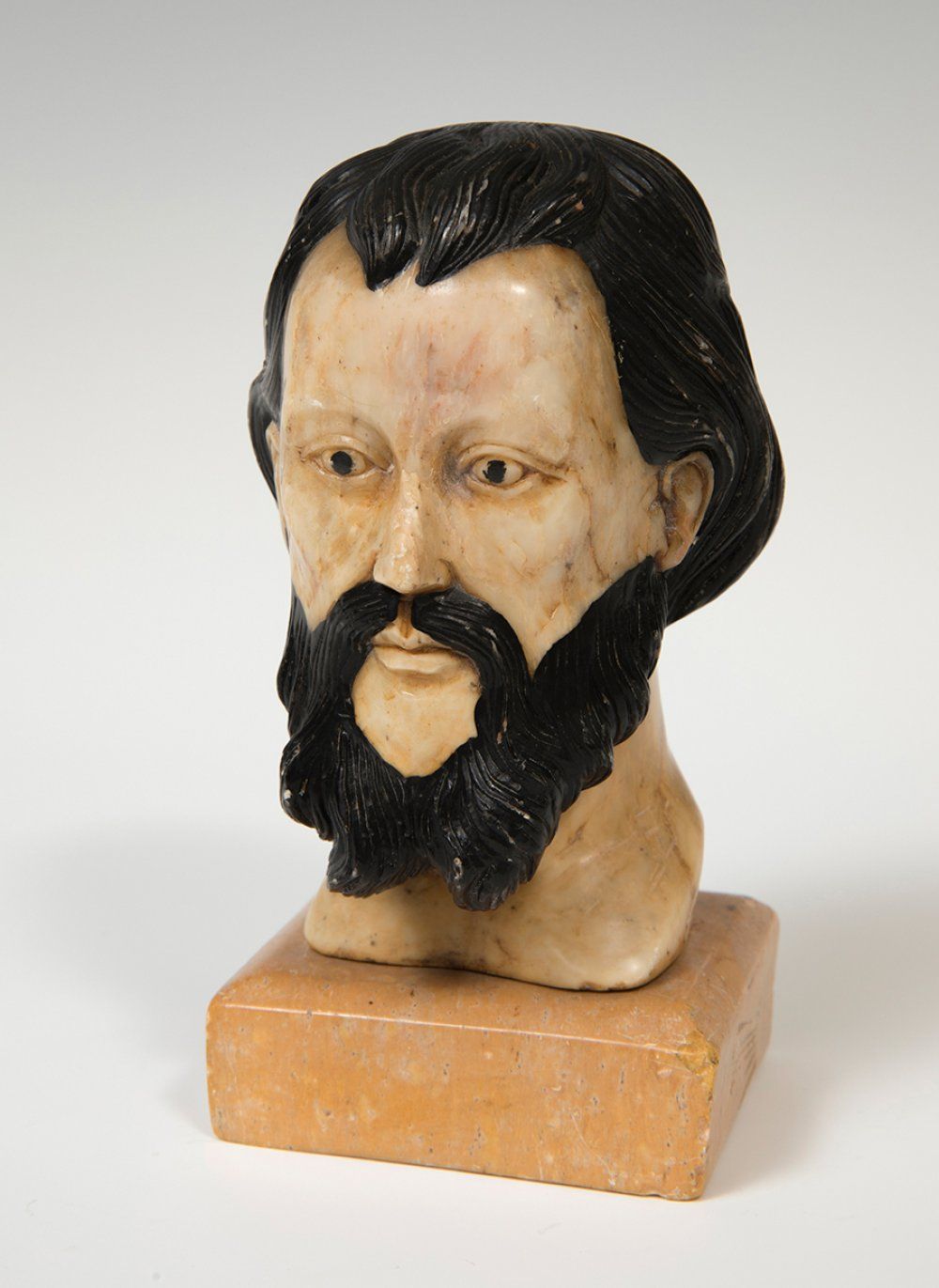Description
Hispano-Philippine school of the 18th century. "Bust of Christ". Carved and polychromed alabaster. Rear base. Measurements: 13 x 6,5 x 6 cm. Devotional image made in round and polychrome, representing the bust of Christ. It is a work of art made under the Spanish influence, filtered through America, and carved in the Philippines by both local and Chinese artists who settled in the archipelago. The Sangleyes or Chinese of the Philippines, urged by the demand for Christian religious works, responded to Spanish requests by using sculptures, prints or engravings sent from the metropolis as models, but without forgetting the features of the oriental anatomy. For this reason, the eyes are slanted, with bulging eyelids made with a double flange, creating a face with protruding cheekbones that departs from the classical ideal of contemporary Europe. Spain was the destination of much-prized oriental products via the maritime trade routes, which satisfied the great demand for luxurious and exotic objects. Given the importance given to religious images in the Christian world, ambitious sculptural series and extensive iconographic programmes were created for churches and convents, as well as printed prints, medals and reliquaries for private devotion. As a whole, regardless of their size or medium, these images fulfilled the aim of sacralising everyday life beyond the altars. Among this wide repertoire, we would like to highlight those painted replicas of a particular devotional sculpture, whether of a Christ or a Virgin, which technically recreate their original location as well as displaying the figure in question. These painted copies were called "true portraits" or vera efigie, an artistic phenomenon of prolific production in the viceroyalty of New Spain and the European metropolis.
16
Hispano-Philippine school of the 18th century. "Bust of Christ". Carved and polychromed alabaster. Rear base. Measurements: 13 x 6,5 x 6 cm. Devotional image made in round and polychrome, representing the bust of Christ. It is a work of art made under the Spanish influence, filtered through America, and carved in the Philippines by both local and Chinese artists who settled in the archipelago. The Sangleyes or Chinese of the Philippines, urged by the demand for Christian religious works, responded to Spanish requests by using sculptures, prints or engravings sent from the metropolis as models, but without forgetting the features of the oriental anatomy. For this reason, the eyes are slanted, with bulging eyelids made with a double flange, creating a face with protruding cheekbones that departs from the classical ideal of contemporary Europe. Spain was the destination of much-prized oriental products via the maritime trade routes, which satisfied the great demand for luxurious and exotic objects. Given the importance given to religious images in the Christian world, ambitious sculptural series and extensive iconographic programmes were created for churches and convents, as well as printed prints, medals and reliquaries for private devotion. As a whole, regardless of their size or medium, these images fulfilled the aim of sacralising everyday life beyond the altars. Among this wide repertoire, we would like to highlight those painted replicas of a particular devotional sculpture, whether of a Christ or a Virgin, which technically recreate their original location as well as displaying the figure in question. These painted copies were called "true portraits" or vera efigie, an artistic phenomenon of prolific production in the viceroyalty of New Spain and the European metropolis.
